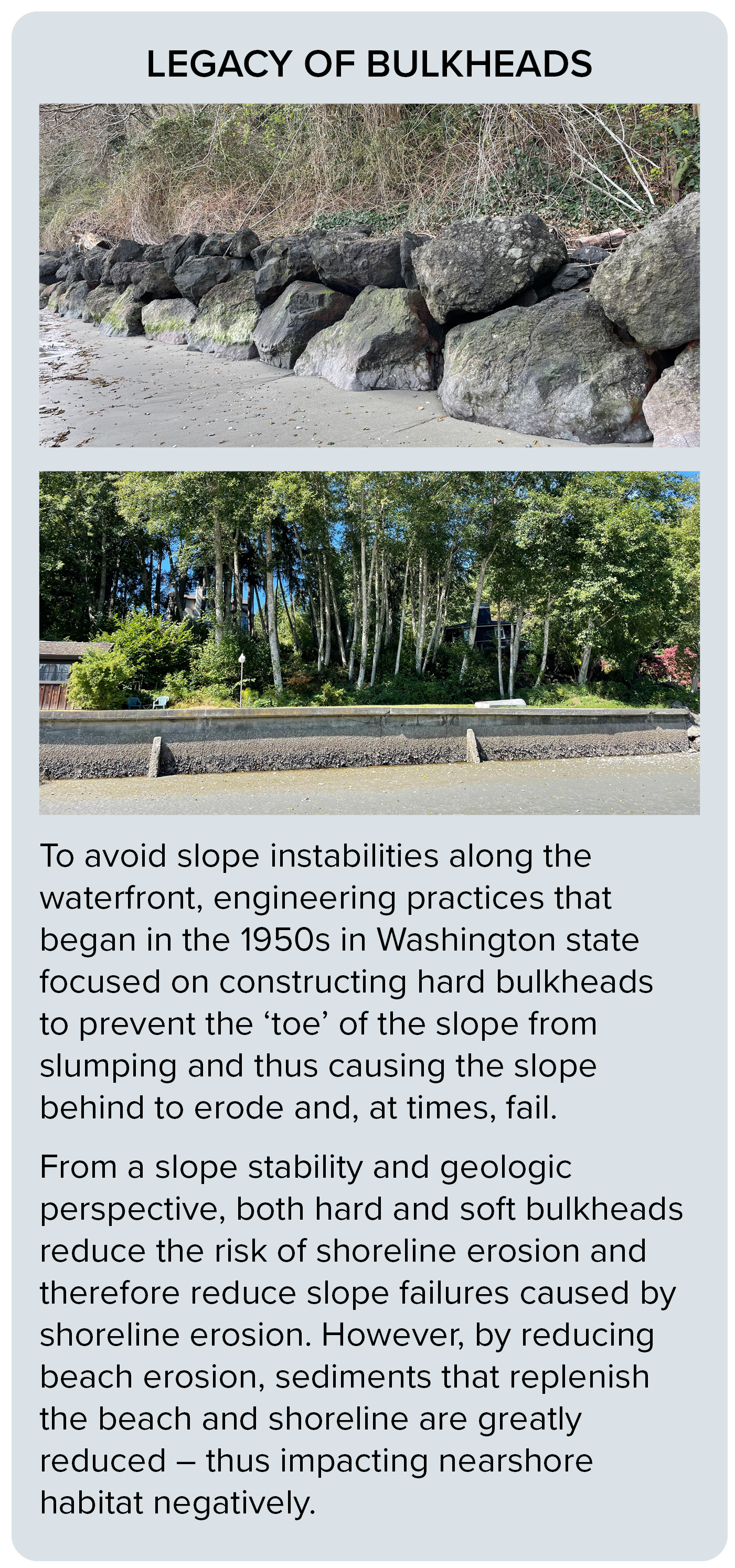Where did you start with your test prep?
I was originally scheduled to sit for the test on March 20, 2020. I was lucky enough to sign up to take it with a couple of my friends from grad school and we formed a study group, which made the whole experience a lot easier.
My first step was to gather all that info and wrap my head around it. I had the review course the National Association of State Boards of Geology (ASBOG) offers and their review book and accompanying practice test booklets, which circulate around to the aspiring geologists in Aspect’s Seattle office. I was lucky to have it; it had a lot of personalized touches from those who’d used it before – old flash cards and other helpful pointers.
Next I took the practice tests to gauge where I was at with the material. If I was really deficient in one area, I focused on that for my studies rather than that material I already knew and was already practicing in my day-to-day work.
How did COVID affect your test prep?
March 2020 was a super unknown moment – we were just about to be in COVID lockdown. The week of the test, Washington State put into effect the mandate that no group over 50 people could meet in person. Uncertain about what would happen, we frantically emailed ASBOG, who also run the test.
Two days before the exam, they announced that the test had been cancelled until further notice. That was jarring. We’d just spent so much time studying; we had been at it every weekend from January to March. The test is only offered twice a year, so they moved us all to October 2020.
How did you feel when you found out you’d be taking the test months later than expected? How did it change your study tactics?
I was mad. I had scheduled my test intentionally so I wouldn’t have to waste a beautiful Seattle summer studying, but then I was forced to do that anyway. I put off studying until about August, when I resumed reviewing the material in earnest – every night of the work week plus one weekend day.
Most of the general concepts I quickly recalled from my previous round of studying, but I found I needed to brush up on some of the finer details. Also, in the time between March and October 2020, I’d done a lot more intense technical hydrogeologic work at Aspect, where I was actually using the calculations in the example problems in real-world situations. That really helped clarify and solidify some fundamentals I needed for the test.
What was the best piece(s) of advice you got from others who’d done this before?
There’s a great collective of people at Aspect and in my cohort of grad school colleagues that had gone through this before. Getting their take on the test was really helpful. I heeded their advice to take the practice tests to set my standard, then grade myself to see how I did, take another midway through studying, then take one more right before the exam. These were good check-ins to focus my studies.
I also learned there are people who I respect as geologists who didn’t pass the test the first time. That was a serious turning point in my studying journey and showed me the importance of giving myself some grace in the moment, especially with COVID. I was able to step back and not be too hard on myself, no matter the outcome. I reassured myself, “If you don’t pass in October, it’s ok. This year has been so much more difficult than expected, and at least you tried.”
What should a person gearing up to do this know about the mental, physical, and social challenges of test prep?
Mentally, you need to prepare yourself to ingest a lot of knowledge. Some of it you may be learning for the first time, some of it you might just be refreshing, but you have to make time and space for that in your life. Prioritizing the studying over backpacking or other trips was initially a let-down, but ultimately helped me stay focused. I also enjoyed making a routine of studying—it helped me say no to social engagements and focus on the task at hand.
I was definitely physically stressed out during my year-long studying endeavor. When I was doing the bulk of my studying, I had a lighter workload with more flexibility. But the second time around, likely as a result of general COVID stress, I could tell my body was tense. Prioritizing walks, bike rides and runs here and there to clear my mind, and nourishing my body with all my favorite study snacks made everything much better.




























